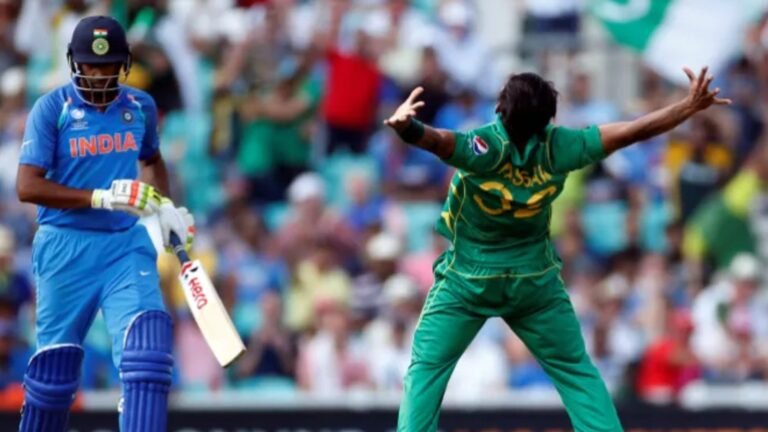Cricket is not just a sport; it’s a passion that demands dedication, both on and off the field. Cricket equipment maintenance doesn’t always get the attention it deserves, even though it plays a key role in a player’s success. Whether you’re an amateur or a professional, taking care of your gear not only enhances your performance but also extends the life of your equipment, saving you money in the long run.
This guide covers comprehensive tips on maintaining every key item in your cricket kit: bats, balls, pads, gloves, helmets, shoes, clothing, bags, and accessories.
- Cricket Bat Care
- Oiling
Cricket bats made from English or Kashmir willow require oiling with raw linseed oil or specialized bat oil. This keeps the wood fibers supple and reduces the chances of cracks.
How to oil a bat:
- Apply 2–3 light coats using a soft cloth.
- Let it absorb for 24 hours between coats.
- Avoid over-oiling, as it can make the bat too soft.
-
Knocking-In
Knocking-in is crucial for preparing the bat face to withstand high-speed ball impact.
Steps:
- For knocking-in, either a wooden mallet or an old cricket ball will do the job effectively.
- Gently knock the edges and face.
- Repeat for several hours over a few days.
Some bats come “pre-knocked-in”, but additional knocking is still recommended.
-
Storage
- Store in a cool, dry place (not in your car or a damp room).
- Keep away from extreme temperatures and moisture.
- Avoid leaning it against walls for long periods use a bat rack if possible.
-
Repairs
- Small cracks can be repaired with bat tape or glue.
- Major damage may require professional repair.
- Cricket Ball Care
- For Leather Balls:
- Wipe with a dry cloth after every use.
- Use leather conditioner occasionally to maintain shine and hardness.
- Store in a dry place, ideally wrapped in a cloth.
-
Avoid Moisture
Leather balls can swell or lose shape if exposed to water. Always dry them immediately if wet.
-
Rotation
For nets or practice, use multiple balls in rotation to avoid overuse of one ball.
- Batting Pads
- Cleaning
- Use a damp cloth to wipe dust and dirt.
- Avoid soaking them in water.
- For tough stains, use mild detergent and scrub gently.
-
Drying
- Air dry in shade.
- Avoid placing under direct sunlight or near heaters.
-
Storage
- Store in a ventilated kit bag.
- Use a pad separator to prevent flattening or warping.
- Batting and Wicket-Keeping Gloves
- Post-Use Care
- Always air dry gloves after every match or practice session.
- Open the Velcro and fingers wide for better air circulation.
-
Deep Cleaning
- Lightly clean with a damp cloth.
- Avoid machine washing.
- Replace inner linings when they become too worn.
-
Maintenance Tips
- Don’t leave gloves balled up or zipped in a bag.
- Use glove conditioners (optional) to keep the leather soft.
- Helmet Maintenance
- Cleaning
- Wipe with a damp cloth.
- Use mild soap and water to clean the grill and outer shell.
- Clean inner padding with anti-bacterial wipes or gentle sprays.
-
Inspection
- Check the condition of the helmet’s grill, straps, and shell regularly to ensure they’re free from damage.
- Replace damaged helmets immediately for safety reasons.
-
Storage
- Store in a helmet bag or in the top section of your kit bag.
- Avoid placing heavy objects on it to prevent distortion.
- Cricket Shoes
- Cleaning
- Brush off mud and grass after every session.
- For effective deep cleaning, gently scrub with a damp cloth and some mild soap.
- Remove and clean insoles separately.
-
Drying
- Let them dry naturally.
- Avoid dryers or direct heat.
-
Maintenance Tips
- Replace spikes as they wear down.
- Use shoe bags to protect them in your kit.
- Rotate between two pairs if possible to extend life.
-
Clothing (Jerseys, Trousers, Socks, etc.)
-
Washing
- Wash whites separately from colored kits.
- Use non-bleach detergents to preserve fabric.
- Cold wash and air dry for longevity.
-
Storage
- Fold and store in clean, dry drawers or bags.
- Avoid over-stuffing your kit bag with damp clothes.
-
Stain Removal
- Use a stain remover for grass or ball marks.
- Avoid harsh scrubbing to protect fabric integrity.
- Kit Bags
- Cleaning
- Frequently empty and wipe down your bag to prevent the buildup of dirt, grass, and bad smells.
- Use a vacuum cleaner or brush to clean the inside.
- Wipe down the outer fabric with mild soap and water.
-
Odor Control
- Use deodorizing balls or sachets to absorb bad smells.
- Air out the bag after every match or practice.
-
Organization
- Use compartments for each item to avoid clutter.
- Keep heavy items at the base and fragile ones (like helmets) on top.
- Protective Gear (Thigh Pads, Abdominal Guards, Chest Guards)
- Cleaning
- Wipe down with antibacterial wipes or damp cloth.
- Submerging in water can harm the foam and padding—avoid it completely.
-
Drying and Storage
- Let them dry fully after each use to prevent bacteria growth.
- Store in a dry section of your bag.
-
Replacement
- Check straps and padding often.
- Replace worn-out protective gear to maintain safety standards.
- Accessories (Grips, Tapes, Towels, Water Bottles)
- Bat Grips
- Replace worn-out grips regularly for better control.
- Use a grip cone for easy replacement.
-
Tapes and Medical Kits
- Maintain a well-stocked supply of finger tape, bandages, and first-aid sprays for emergencies.
- Store them in a dry pouch or side pocket.
-
Towels and Bottles
- Wash towels regularly.
- Always clean and refill your bottles with fresh water to stay hydrated safely.
-
Off-Season Storage
When cricket season is over, take time to clean and store your gear properly:
- Oil and knock-in your bat if required.
- Clean and dry all pads, gloves, and shoes thoroughly.
- Store everything in a dry, ventilated area.
- Avoid attics or basements prone to moisture or pests.
Use silica gel packets in the kit bag to reduce humidity buildup.
-
General Tips for Long-Lasting Equipment
- Label everything: This helps prevent mix-ups and losses during team travel or nets.
- Regular checks: Before every game, check your gear for damage or wear.
- Avoid sharing personal gear: Pads, gloves, and guards are best kept personal to avoid wear and hygiene issues.
- Invest in quality: Quality gear lasts longer and provides better performance and protection.
Final Thoughts
Proper maintenance of your cricket equipment is an essential but often underestimated part of being a cricketer. It reflects your discipline, commitment, and respect for the game. Whether it’s your bat, ball, gloves, or even your shoes, each piece of gear plays a vital role in your performance and safety. Well-maintained equipment not only lasts longer but also allows you to play with greater confidence and focus, without distractions caused by discomfort or malfunction.
Taking the time to oil your bat, clean your pads, air out your gloves, or simply organize your kit bag may seem like small tasks, but they collectively have a significant impact. Regular cleaning keeps your gear hygienic, timely repairs prevent further damage, and proper storage preserves the structure and integrity of every item. These practices ensure that when you walk onto the field, your only focus is on the game, not on a torn glove, a cracked bat, or missing gear.
Moreover, developing a habit of equipment care teaches responsibility, patience, and pride in preparation traits that are just as important as physical skill in cricket. Whether you’re training at the nets, playing club matches, or representing your school or team, having well-cared-for equipment gives you a competitive edge and enhances your overall playing experience.
In conclusion, maintaining your cricket equipment isn’t just about keeping it clean, it’s about being a complete player. Your gear is more than just tools; it’s your support system on the field. So treat it with care, maintain it with diligence, and it will serve you well in return. A well-kept kit is a sign of a serious cricketer let yours speak volumes about your dedication and professionalism.
















